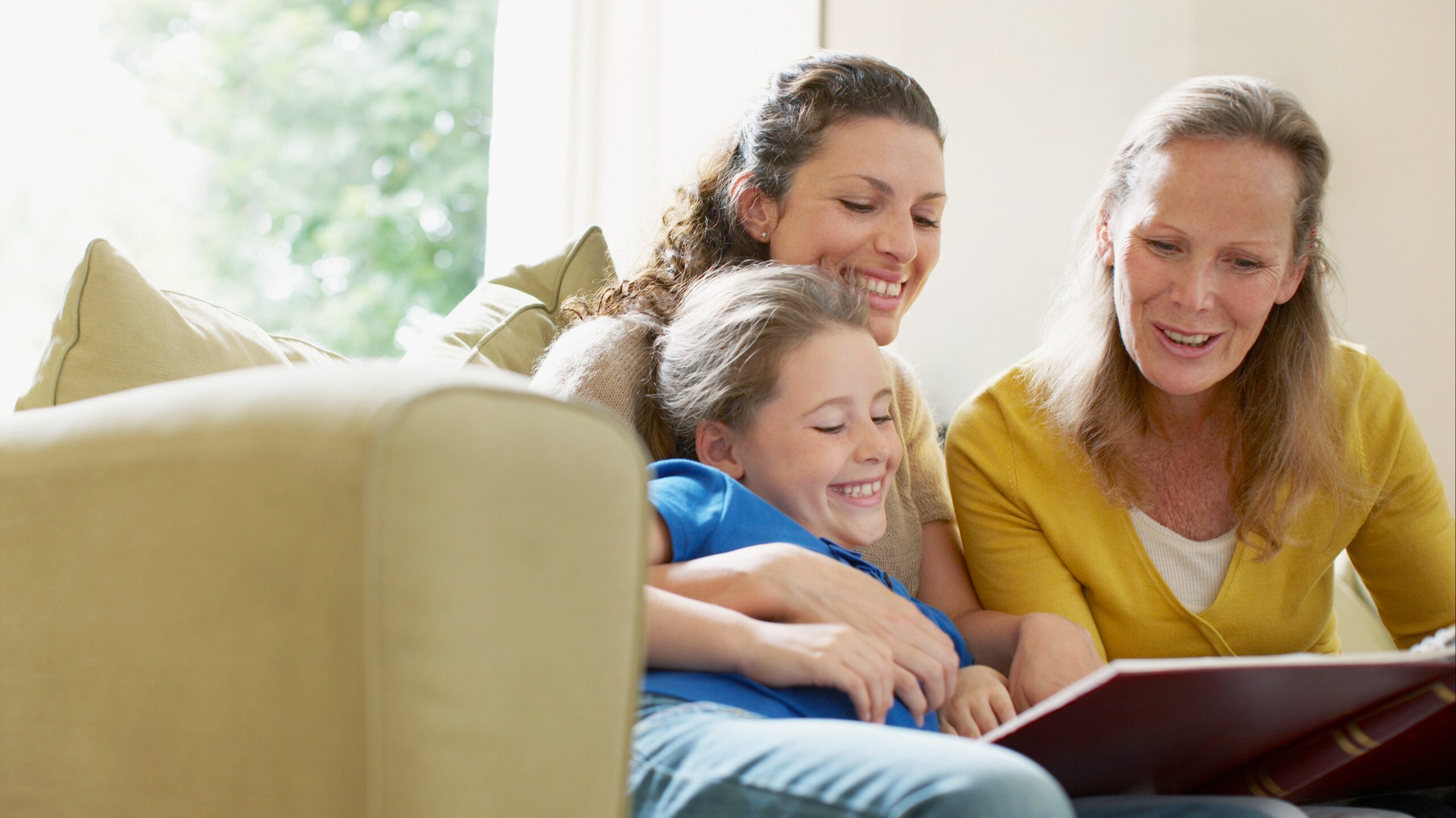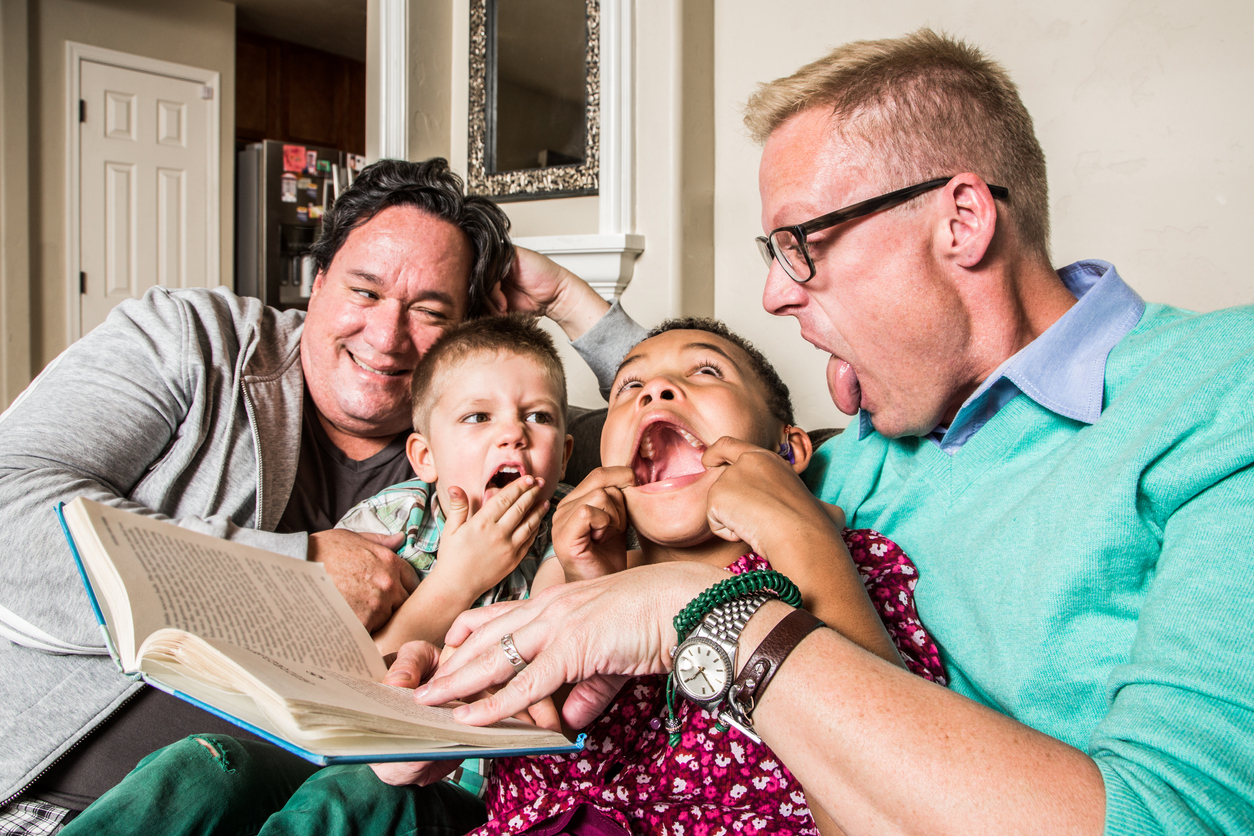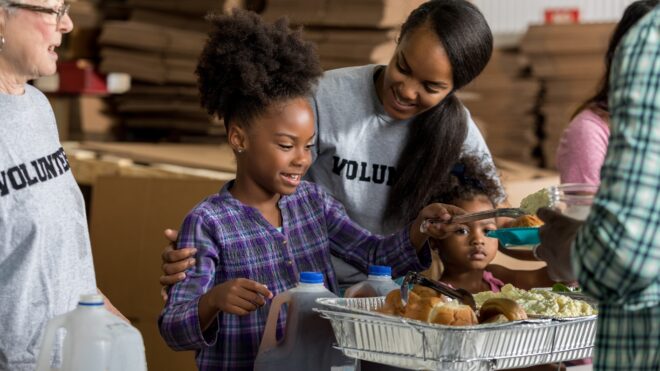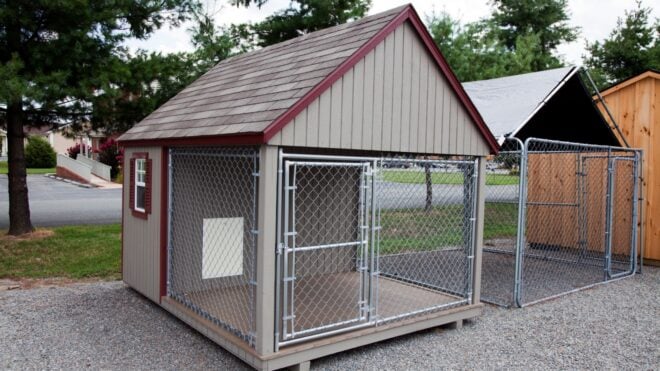
Many parents want to raise children who are kind, thoughtful members of society and who feel a connection to the people and experiences around them. One way to do that is by teaching and modeling gratitude to our children.
By definition, gratitude is the act of expressing thanks for something that's happened, or to someone who has done something for us. But the actual act of exuding gratitude can reach quite far into our minds and beings; as Verywell Mind puts it, "When you experience gratitude, you feel grateful for something or someone in your life and respond with feelings of kindness, warmth, and other forms of generosity."
One way to teach gratitude to kids is by participating in gratitude-oriented activities with them. Here are a few to try.
Gratitude Trees

Gratitude trees are what they sound like: trees that have branches that will ultimately be filled with all the things your kids are grateful for. Whether you draw a tree on a chalkboard, paint it on a wall, or simply employ the use of paper and pen, your tree will begin barren and will slowly be filled in.
As explained by PositivePsychology.com, you can use prompts to begin your gratitude tree but certainly don't have to.
Gratitude Questions

University of North Carolina at Chapel Hill has noted that learning gratitude has four stages: noticing (what we are grateful for), thinking (about what we are grateful for), feeling (grateful), and doing (practicing gratitude in our lives). With that in mind, Verywell Mind recommends asking your children four questions when you are trying to teach and demonstrate gratitude. These questions are based on your child having received a gift they are delighted by:
- Notice: What do you have in your life to be grateful for?
- Think: What do you think about this gift?
- Feel: Does it make you feel happy to receive this gift?
- Do: Is there a way to show how you feel about this gift?
Thankful Windows

Here is a very easy and straightforward gratitude activity for you and your kids: gratitude windows! All you need is some window paint, which will be easy enough to remove when you are ready. To create your gratitude window, simply use the paint to write one thing you are grateful for on a window in your home (or draw a picture).
Gratitude Jars

Much like its feistier older cousin the swear jar, the gratitude jar is pretty self-explanatory once you start thinking about it. Your family can select a jar that you want to use (a glass jar is a great idea if you want to be able to see the contents) and decorate it how you see fit. From there, once a day each family member can think of something they are grateful for, write it down, and drop the paper into the jar.
Random Acts of Kindness Bingo

The days between Thanksgiving and the winter holidays are a wonderful time to explore gratitude with your children. To that end, this Random Acts of Kindness printable from Megan of The Many Little Joys is a great way to engage your kids. Here's how Megan's family plays the game:
"Each day, we’ll pick one random act of kindness to do together (inspired by this list of 100 ideas as well as some of our own thoughts). Once we’ve completed our chosen task, we’ll color in the box for that act of kindness. Each time we get bingo, we’ll celebrate with a simple fun family activity. Our ultimate goal is to get 'blackout' by Thanksgiving."







